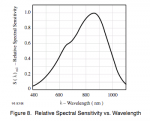OK...
Picaxe attached to an LDR or PhotoTransistor can detect presence of light an even How much light... but... how can I detect the color of that light?
Some sealed meter, have two multicolor LED to show status and functions... even a beacon flash "I'm alive" kind of... but the real problem is they use different color to show status, so... if blink is green, its ok, and if blink red isn't...
Same to other LED, if remains amber, status 1, but if turn to blue, status 2, and if becomes green is status 3 and so on and on...
Worst part of this is.... (yeah you get it) I need to interface that damn thing cuz they install it in a very uncomfy spot...
So... (the million euro question here)
How can I achieve that ?
Any suggestions?
( suicide is NOT an option... lol)
C.U Pals...
.
Picaxe attached to an LDR or PhotoTransistor can detect presence of light an even How much light... but... how can I detect the color of that light?
Some sealed meter, have two multicolor LED to show status and functions... even a beacon flash "I'm alive" kind of... but the real problem is they use different color to show status, so... if blink is green, its ok, and if blink red isn't...
Same to other LED, if remains amber, status 1, but if turn to blue, status 2, and if becomes green is status 3 and so on and on...
Worst part of this is.... (yeah you get it) I need to interface that damn thing cuz they install it in a very uncomfy spot...
So... (the million euro question here)
How can I achieve that ?
Any suggestions?
( suicide is NOT an option... lol)
C.U Pals...
.

